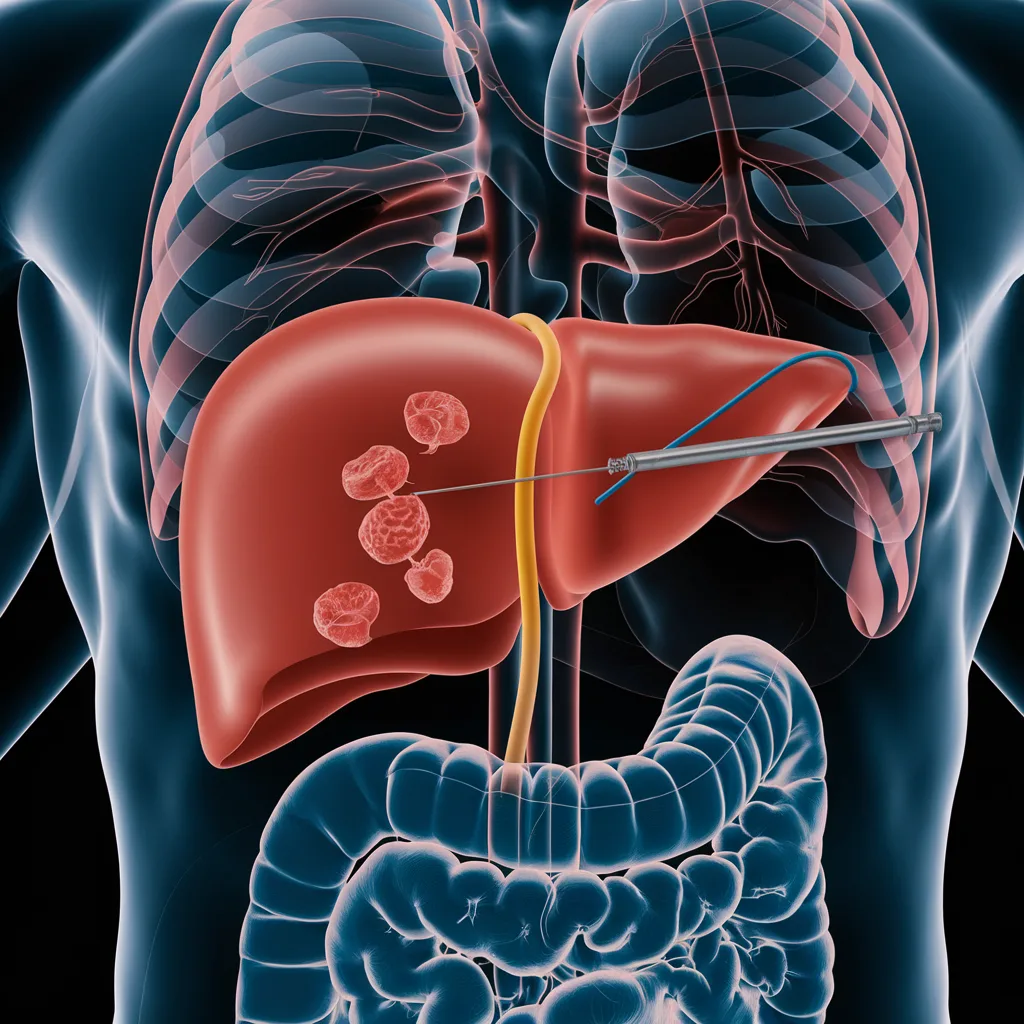Liver Intervention
- Home
- Liver Intervention
Liver interventions are medical procedures used to diagnose, treat, and manage liver diseases. The liver plays a crucial role in detoxification, metabolism, and protein production. When the liver becomes diseased, these interventions are essential for preventing further damage and improving health.
This article explores the causes, symptoms, and treatment options for liver conditions, highlighting how interventions can improve patient outcomes and quality of life.
Causes of Liver Conditions Requiring Intervention
Liver conditions often require intervention due to various factors:
- Liver Cirrhosis: Chronic liver damage, typically caused by alcohol, hepatitis, or fatty liver disease.
- Liver Cancer (Hepatocellular Carcinoma): Cancer that develops in patients with chronic liver disease.
- Hepatitis: Viral liver inflammation (Hepatitis B or C) that can lead to cirrhosis or liver cancer.
- Fatty Liver Disease: Fat accumulation in liver cells, leading to cirrhosis if untreated.
- Liver Vascular Disorders: Conditions like portal vein thrombosis, affecting blood flow to the liver.
These conditions can compromise liver function and require early intervention to prevent severe complications.

Symptoms of Liver Conditions Needing Intervention
As liver diseases progress, common symptoms include:
- Jaundice: Yellowing of the skin and eyes.
- Abdominal Pain or Swelling: Pain in the upper right abdomen or bloating.
- Unexplained Weight Loss: Significant weight loss due to liver dysfunction.
- Fatigue and Weakness: Chronic tiredness common in liver diseases.
- Dark Urine and Pale Stools: Indicators of liver or bile duct issues.
- Nausea and Vomiting: Frequent nausea, indicating advanced liver disease.
If you experience these symptoms, seek medical attention immediately.
Benefits of Early Treatment for Liver Conditions
Early treatment provides several advantages:
- Prevents Liver Failure: Early intervention reduces the risk of complete liver failure, avoiding the need for a transplant.
- Minimizes Complications: Addressing liver disease early can prevent complications like bleeding or cancer.
- Improves Quality of Life: Early treatment alleviates symptoms like pain and fatigue, allowing patients to live more comfortably.
- Cost-Effective: Treating liver disease early is generally less costly than dealing with advanced complications or requiring surgery.
Latest Treatment Techniques for Liver Interventions
Minimally invasive procedures have revolutionized liver disease treatment. Key techniques include:
1. Liver Biopsy (for Diagnosis)
A liver biopsy involves removing a small tissue sample for diagnosis and to assess liver damage.
Example: A patient with hepatitis may undergo a biopsy to evaluate liver damage and determine the appropriate treatment.
Pros:
- Accurate diagnosis
- Assesses disease severity

2. Transarterial Chemoembolization (TACE)
TACE is used to treat liver cancer by delivering chemotherapy directly to the tumor and embolizing the feeding blood vessels, reducing tumor size.
Example: A patient with hepatocellular carcinoma undergoes TACE to shrink the tumor.
Pros:
- Minimally invasive
- Directly targets the tumor
- Fewer side effects than systemic chemotherapy
3. Liver Ablation (Radiofrequency or Microwave)
Liver ablation uses heat to destroy small tumors in the liver, performed under imaging guidance.
Example: A patient with a small tumor might undergo ablation, avoiding the need for major surgery.
Pros:
- Non-surgical
- Effective for small tumors.
- Quick recovery
4. Liver Transplantation
Liver transplantation is required for patients with end-stage liver disease. It involves replacing the diseased liver with a healthy donor liver.
Example: A patient with cirrhosis may require a transplant to restore liver function.
Pros:
- Restores normal liver function
- Improves life expectancy
5. Endoscopic Variceal Banding (EVB)
EVB is used to treat varices (enlarged veins) caused by portal hypertension. Rubber bands are placed around the varices to prevent bleeding.
Example: A cirrhosis patient with varices may undergo EVB to reduce the risk of bleeding.
Pros:
- Minimally invasive
- Prevents bleeding complications
- Quick recovery

Conclusion
Liver interventions offer life-saving treatments for those with liver diseases. With advances like TACE, liver biopsy, and liver transplantation, patients now have access to effective, minimally invasive treatments that provide quicker recovery times and fewer complications. Early diagnosis and treatment are crucial for preventing severe outcomes and improving overall health.
If you experience liver disease symptoms, seek medical advice early to explore treatment options and prevent further complications.
Frequently Asked Questions (FAQs)
A liver biopsy involves removing a small tissue sample to diagnose liver diseases and assess liver damage.
TACE delivers chemotherapy directly to liver tumors and blocks blood vessels feeding them.
Risks include organ rejection, infections, and complications from anesthesia.
Recovery is typically quick, with most patients returning to normal activities within a few days.
Would you like to request an appointment?
You can call on +91-98200 86520 for Appointments or fill the form below
If you’re experiencing symptoms related to any of these conditions, contact us today for a consultation. Our specialists will help you find the best treatment options for your health and well-being.
